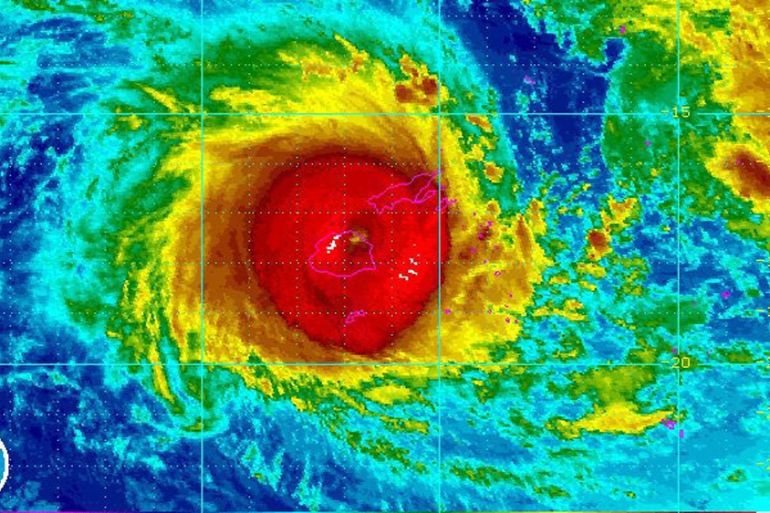Cyclone Winston’s strength ‘partly due to El Nino’
Other atmospheric conditions have also contributed to formation of Category 5 cyclone.

Severe Tropical Cyclone Winston has been a strange storm. It has been around for more than one week.
Tonga has already experienced Winston twice within a few days. The cyclone has meandered its way eastwards and then carried out an about-turn to head back towards the west.
Keep reading
list of 4 itemsThousands evacuate as wildfire grows ‘dramatically’ in western Canada
Photos: Flash floods in Afghanistan devastate lives and livelihoods
Floods kill 50 people in northern Afghanistan’s Baghlan province
That Winston has now strengthened into the most powerful storm recorded in the South Pacific, east of Australia, is partly due to the ongoing effects of El Nino. Sea temperatures are in the order of 31C, some 1.5 degrees above average; and the warmth permeates to a considerable depth. This heat serves as the ‘engine room’ for Winston’s development.
Other atmospheric conditions have also been favourable. Wind shear – the change of wind speed and direction with height – serves to disrupt the circulation of cyclones. In Winston’s case, this has been only moderate. The outflow of air at the top of the storm has also been conducive to its development.
Satellite imagery reveals that Winston has a ‘doughnut’ appearance’. It is largely circular with a clear eyewall in the centre. Such cyclones are ‘annular’ and they have a worrying tendency to be both strong and long lasting.
Winston’s track is very difficult to predict. This is partly because of a lack of any historical precedent, and partly because Winston will interact with the islands, which will help to disrupt, though only slightly, its energy supply.
Sustained winds of 170km/h were recorded when Winston struck the island of Vanua Balavu at 1700GMT on Friday. Since then, Winston’s intensification is such that gusts, based on computer forecasts ,are likely to have reached 325 to 350km/h, which will cause catastrophic damage.
A significant storm surge is likely, in addition to waves in excess of 13 metres. Rainfall totals are likely to top 300mm in many locations.
Winston is expected to continue its westward track to clear Fiji at around 18GMT, but it will remain stormy and very wet for several hours thereafter.